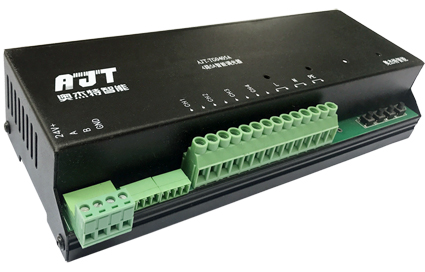Comparison of three intelligent dimming technologies
"The demand that intelligence adjusts light is divided into three kinds: it is the demand that the function type adjusts light, wait like the porch that enters the door, meeting room; Two it is to live in the comfort in the day and the embodiment of the style of the day, the light and dark collocation of the lamp can be adjusted according to the needs of the environment, but also can play the role of foil atmosphere; The third is the need for environmental protection and energy conservation, which is also the new demand for zui proposed by energy star." Jingmen technology high-end planning engineer pan jun explained. He believes that the main reason for intelligent dimming technology to become the future direction of LED driven technology is energy saving. Energy saving is one of LEDzui's outstanding strengths and an important basis for the government's policy of promoting the use of the technology. In general lighting, if intelligent dimming technology is introduced, the energy-saving advantages of LED lighting can be more fully played. As shown in figure 2, the white curve is the brightness of outdoor ambient light, while the black curve is the brightness of indoor lights. "You can save about 80 percent of your energy by adjusting the light in your home to the light outside."
There are three main LED smart dimming methods on the market: one is linear smart dimming, the other is SCR smart dimming, and the third is PWM smart dimming. The three intelligent dimming technologies have their own advantages and disadvantages.
1, linear intelligent dimming is mainly based on the principle of simple partial pressure, its advantages are simple to use, do not disturb, disadvantages are not sensitive, low power, and in the fall of LED current, will cause the white LED to yellow spectrum deviation, but also due to the partial pressure to produce too much heat.
2. Silicon controlled intelligent dimming (SCR) is an intelligent dimming method now widely used in the use of incandescent and energy-saving lamps. It works by passing the input voltage waveform through the conduction Angle tangent wave to produce a tangential output voltage waveform. Using the tangential principle, the RMS of the output voltage can be reduced to reduce the power of the general load (the resistive load). The advantages of SCR intelligent dimming are high power and stable performance. However, according to its working principle, there are also some planning shortcomings in the use, the origin of the shortcomings is that the thyristor conduction after the need for a adhere to the current to adhere to the conduction, otherwise it will return to the cut-off state. Different SCR adhere to different current, usually between a few mA to dozens of mA, some as much as 50mA. And the larger the power, the greater the demand adhere to the current, if adhere to the current is not enough, the conduction Angle is not stable, the output waveform will be uneven, and will produce trembling and peak, when such an unstable output to the LED will appear shining. Since the previous incandescent lamps were under linear load and the working current generally exceeded 50mA, they would not show the phenomenon of flash. Therefore, the SCR smart dimmer applicable to incandescent lamps in the market is not directly applicable to LED products, so it needs to be planned and improved to meet the working characteristics of LED.
3. PWM intelligent dimming technology is now regarded as zui intelligent dimming technology of LED with a perspective. During the intelligent dimming of pulse width PWM, a rated pulse width conditioning signal source is required. After changing the duty cycle of the input pulse signal, the gate control signal of the power field effect tube is modulated by the LED driver chip, and then the current through the LED is adjusted. The advantages of this kind of intelligent dimming technology lie in the use of simple, high power, high precision, and intelligent dimming function is good, the disadvantage is that the general LED driver according to the principle of switching power supply, if the PWM intelligent dimming frequency is between 200~20kHz, the LED driver around the inductance and output capacitance simply produce audible noise. In addition, when conducting PWM intelligent dimming, the closer the frequency of conditioning signal is to that of LED driver chip for gate control signal, the worse the linear effect will be.
Although the prospect of PWM intelligent dimming technology is widely favored, under the premise of huge market potential of LED lighting replacement, terminal system manufacturers prefer SCR intelligent dimming technology from the perspective of feasibility of replacing lamps. Pan jun pointed out that the linear intelligent dimming and PWM intelligent dimming in the household and commercial use of the existing lamps can not replace the problem. "When linear intelligent dimming and PWM intelligent dimming are used in home lighting or commercial lighting, the big problem encountered by zui is not the need to add load voltage circuit and supply pulse control signal, but the need for control line in both methods. Because traditional lamps and lanterns have two electric contact only, if want to add linear or PWM intelligence to smooth light function, need to change lamps and lanterns plan, add control line, also cannot accomplish replace sex to transform smoothly consequently. If the LED lamps compatible with the existing silicon controlled intelligent dimming control technology, it is very simple to complete the replacement transformation. It's just that when you apply a SCR smart dimmer to an LED, you need to make some adaptive changes."
There are four kinds of design problems in intelligent LED dimming planning with SCR, namely, 100Hz stroboscopic, poor stability, overheat load and inconsistent working range of intelligent dimming with different SCR. Only after the improvement planning for the above problems can the SCR intelligent dimming technology better meet the working characteristics of LED.


